Andromeda galaxy is the closest huge galaxy to our Milky Way Galaxy. It is the most faraway thing that you can see with the naked eye.
Key Facts & Summary
- The Andromeda Galaxy is the no1 galaxy in the Local Group. It is twice the size of the Milky Way.
- At first, astronomers believed it was a nebular cloud in the Milky Way.
- The Andromeda Galaxy has a massive star cluster in its center and a supermassive black hole somewhere hidden inside it.
- The Andromeda Galaxy was named after its constellation – the constellation of Andromeda. In Greek mythology, Andromeda was the daughter of Cepheus and Cassiopeia.
- The Andromeda Galaxy is moving towards our Milky Way galaxy, with a speed of around 110 kilometers per second (68 miles/s)
- A study done in 2006 says that the Milky Way has only 80% of the mass of the Andromeda Galaxy.
- This galaxy has one trillion stars, and our Milky Way has around 200-400 billion.
- It is believed that in approximately 4,5 billion years, the Milky Way and Andromeda galaxies will collide, forming a sizeable elliptical type of galaxy.
- The Andromeda Galaxy is easy to spot since it has an apparent magnitude of 3.4, meaning it is bright enough to be viewed by us on moonless nights, with no equipment.
- In the 17th century, it was settled that Andromeda Galaxy is a galaxy outside our own.
- In 1925, Edwin Hubble discovered a particular variable star inside the Andromeda Galaxy.
- This galaxy has a disk of blue stars, and it is encircled by a ring filled with red stars.
- Thanks to the Andromeda Galaxy, we know that more than one galaxy is out there.
- The chances of life developing somewhere inside the Andromeda Galaxy might be higher than in our Milky Way since it is more prominent.
The Andromeda Galaxy Kids
The Andromeda Galaxy is our galaxy's big brother, and it is moving towards us. Through its discovery, we have learned that other galaxies exist.
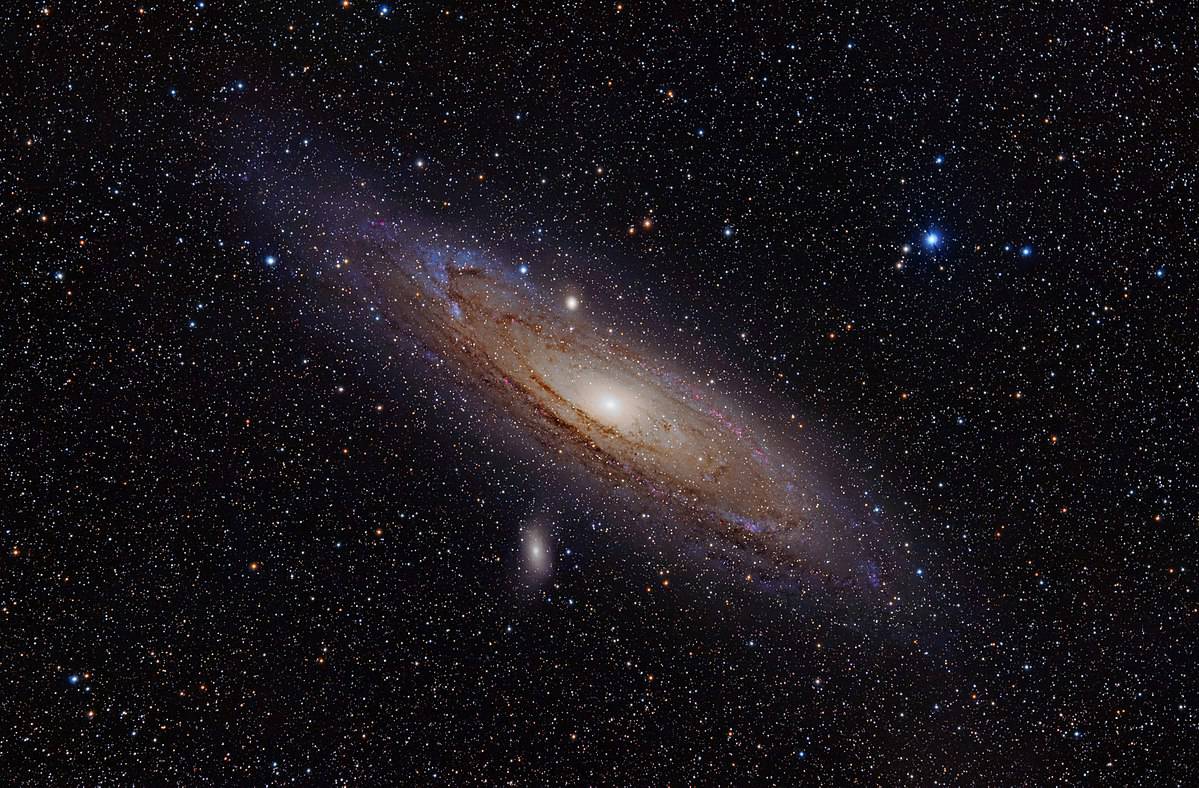
Let's see how the Andromeda Galaxy is compared to our own and why it is such an important galaxy, probably the second most important after our own.
The Andromeda Galaxy vs Milky Way Galaxy
The Andromeda Galaxy is elliptically shaped and the biggest one in our Local Group. As you may already know, the Milky Way is our home galaxy. Compared to it, the Andromeda is twice as big.
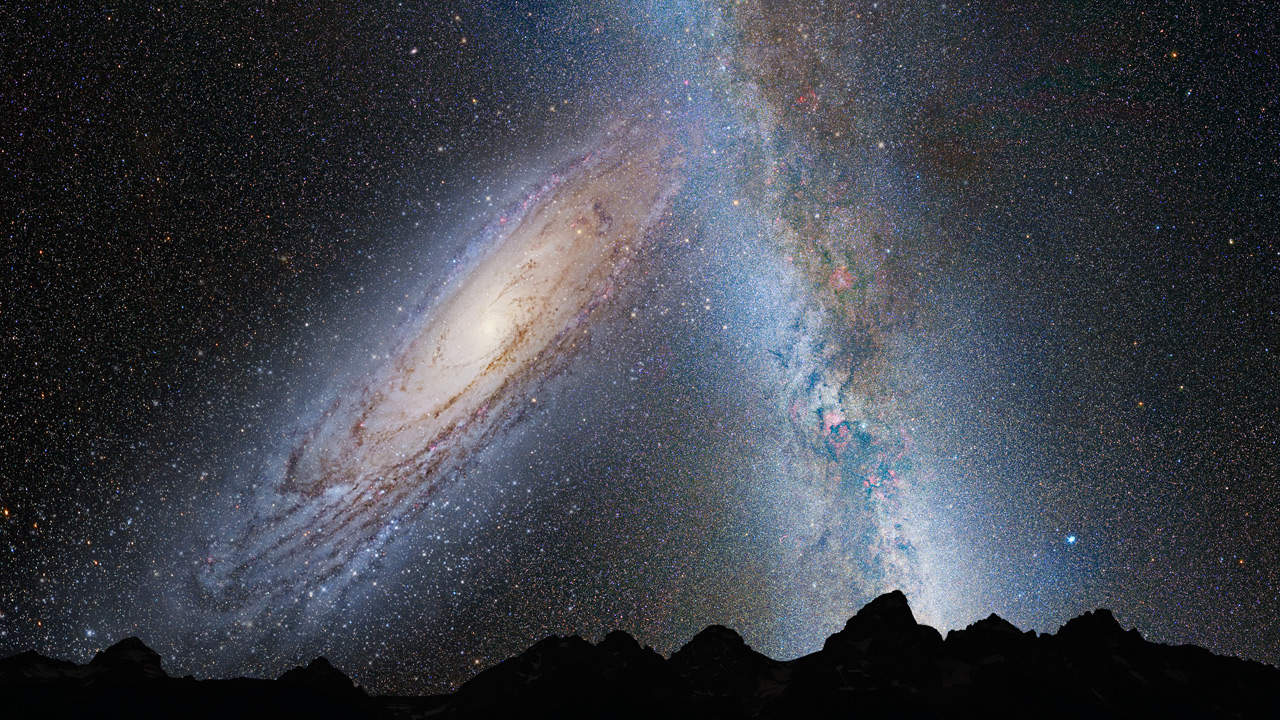
They are both parts of the Local Group, amongst 52 others. The Local Group mostly consists of dwarf galaxies that orbit the three largest ones: Andromeda, Milky Way, and Triangulum. The Andromeda Galaxy has 25 satellite dwarf galaxies, which are made of more than one trillion stars.
Who Said that Andromeda is a Galaxy?
The first real proof popped up in 1923 when the astronomer Edwin Bubble saw a Cepheid variable in the Andromeda Galaxy. This type of star is used to calculate the distance between celestial figures. He estimated the distance to 2.5 million light-years, therefore justifying the existence of other galaxies in the Universe.
What is so Special About Andromeda Galaxy?
The Andromeda Galaxy is the most prominent and closest galaxy to the Milky Way, and the best part about it is the fact that it is among the few that can be seen with the naked eye from Earth. This galaxy is of great importance because astronomers use it to understand the source and evolution of galaxies.
Where is the Andromeda Galaxy Located?
The Andromeda Galaxy is situated in the constellation Andromeda. It sits between the constellation Cassiopeia and the Great Square asterism of the Pegasus constellation. It can be viewed best in the spring from the southern hemisphere.
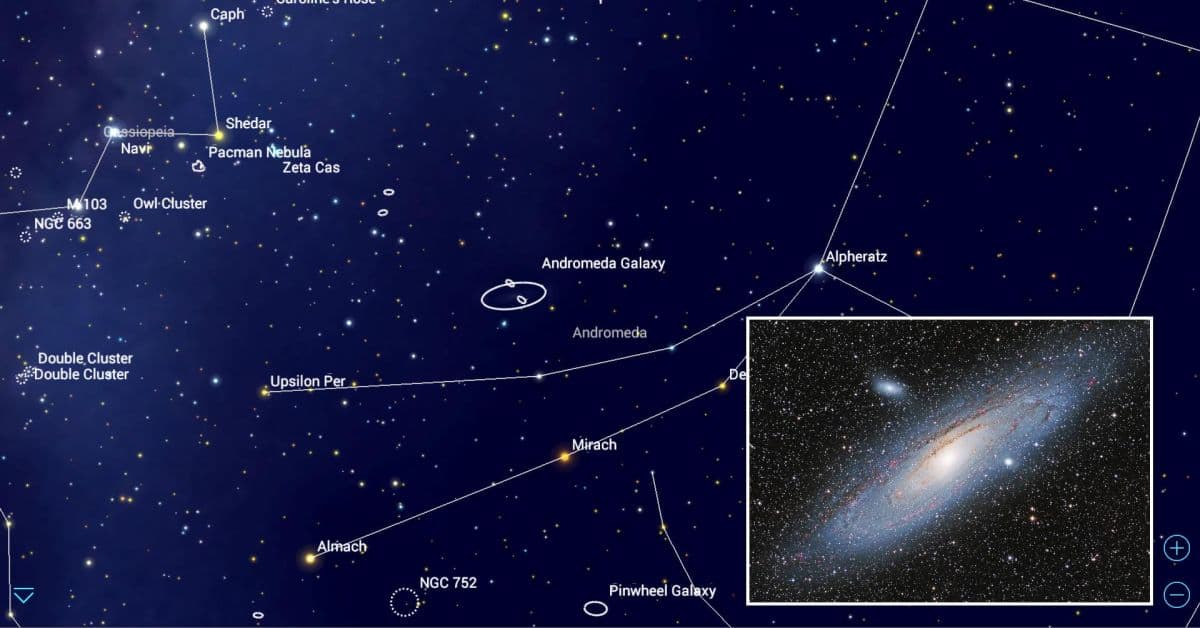
Fun Kids Facts About the Andromeda Galaxy
- Just like The Milky Way, the Andromeda Galaxy has a big hole at the center of the Universe. The gravity is so strong that astronomers believe that there more than just one black hole.
- The distance between Andromeda and our Milky Way is 2.5 million light-years.
- Around Andromeda, there are 13 dwarf galaxies. M1110 is the biggest and shiniest, and it can be seen with a telescope. The second-brightest is M32.
- At first, this galaxy was believed to be a nebula
- Both the Andromeda Galaxy and our own are getting closer to each other over time.
- It is believed that Andromeda was born 5/9 billion years ago due to two smaller galaxies that merged.
Size and Comparison
The Andromeda galaxy isn't just more significant than our own. It is actually the most giant galaxy in the Local Group. The Local Group is where our own Milky Way resides as well.
Andromeda's disk diameter spans over 220.000 light-years across compared to the Milky Way's disk, which spans 100.000 light-years.
Trivia
Is Andromeda Galaxy on a Collision with the Milky Way Galaxy?
It is believed that the Andromeda and the Milky Way will collide in approximately 4.5 billion years. They will not survive; thus, the Solar System will then have a new address, which will be in a vast new elliptical type of galaxy.
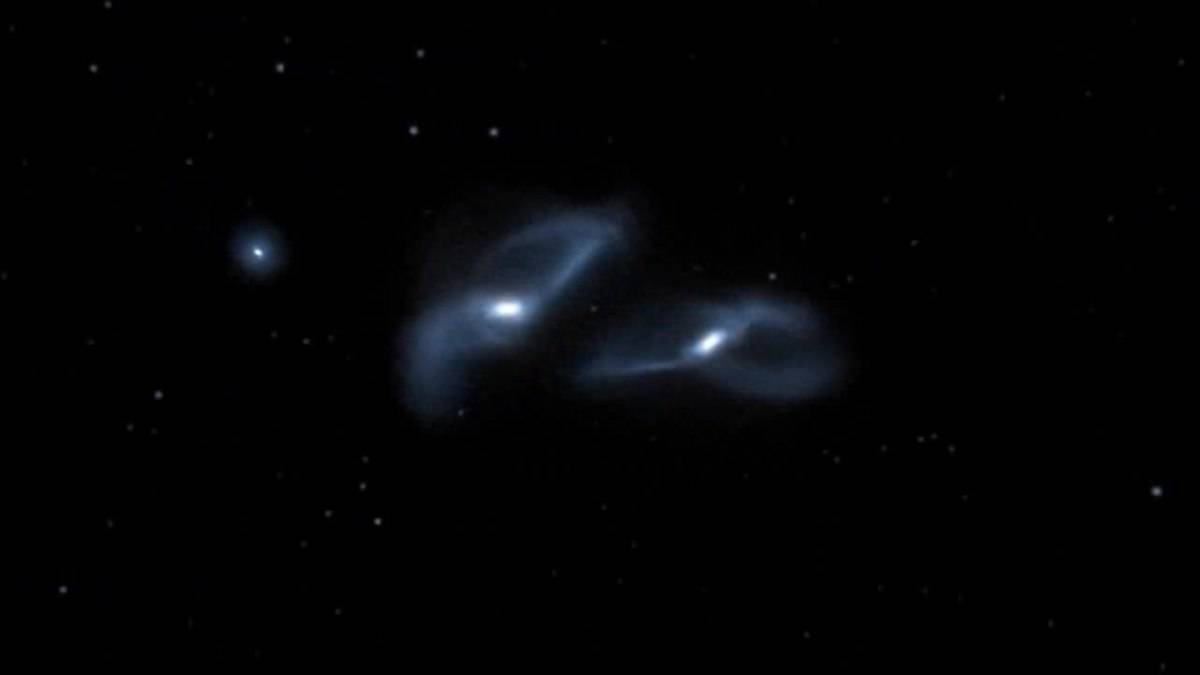
Is there Life on Andromeda Galaxy?
In time, a lot of assumptions have been made if there is life in the Andromeda Galaxy. There is no concrete evidence of it, but astronomers do believe that a civilization similar to ours is broadcasting its presence.
Since the galaxy is twice as big as ours, yet in the Milky Way, life evolved, then chances are pretty high that life exists in Andromeda as well.
Are There Planets in the Andromeda Galaxy?
The Andromeda Galaxy has many stars and naturally exoplanets. However, with current technology, it isn't easy to distinguish them. In the constellation of Andromeda, however, Titawin, and Upsilon Andromedae, have in their orbit four planets. Kappa Andromedae, the triple star, has one exoplanet that is 13 times the mass of Jupiter. The variable star Veritate has an extrasolar planet, which was discovered in 2008.
What is the Largest Galaxy in the Universe?
The Largest Galaxy in the Universe is IC 1101. This one is 50 times the size of the Milky Way and 2.000 times more massive. It is located at the center of the Abell 2029 Galaxy cluster, and it is believed to be the brightest galaxy in the Universe.
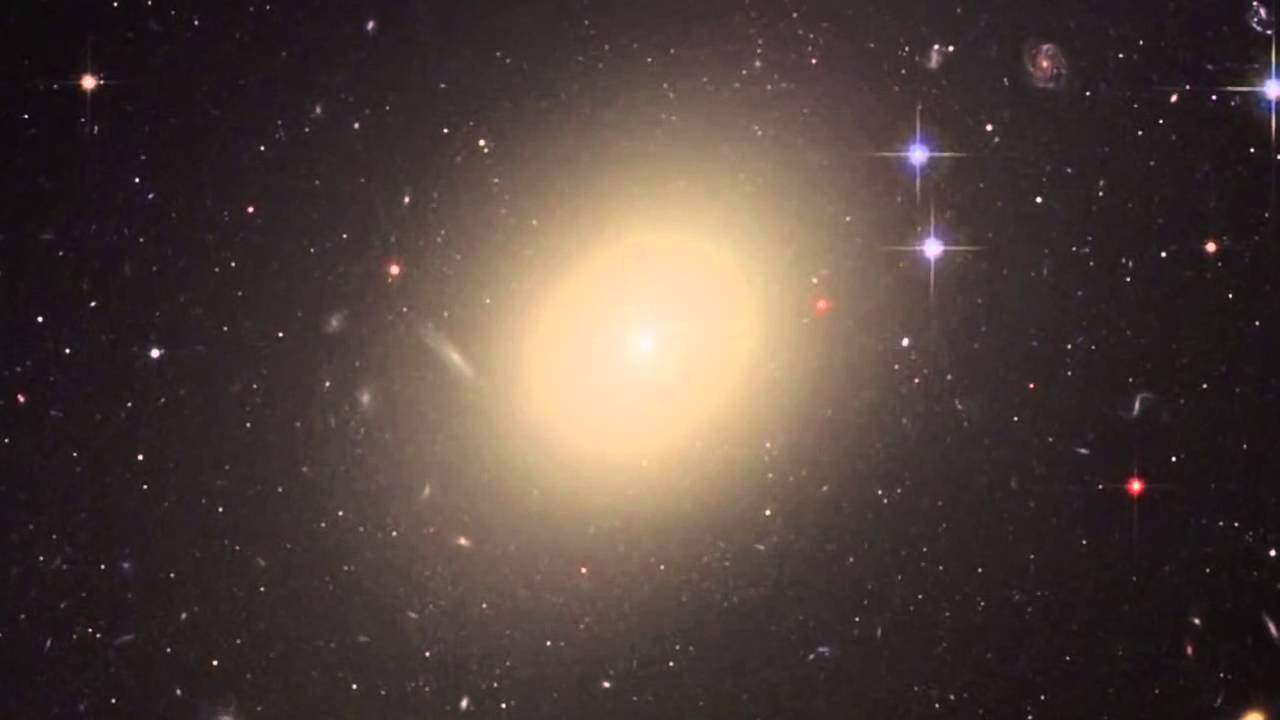
Other Characteristics of the Andromeda Galaxy
The Andromeda Galaxy is approaching us with a speed of 100-140 km/second. It has many satellite galaxies, including 14 dwarf galaxies.
Andromeda is seen at latitudes between +90 and -40. The Andromeda Galaxy's constellation neighbors are Cassiopeia, Lacerta, Pegasus, Perseus, Pisces, and Triangulum.
Alpha Andromedae, also called Alpheratz, is the brightest star in the constellation of Andromeda. The closest star is Ross 248, also called HH Andromedae. It is 10.30 light-years across Earth.
Andromeda Galaxy Notes
- The Andromeda Galaxy is more than double the size of the Milky Way, but it is believed to have the same mass as our galaxy.
- At least 450 globular clusters are orbiting around the Andromeda Galaxy. Some are the most densely populated globulars in the Universe.
- If you want to see the Andromeda Galaxy, you need to spot away from any form of light.
- Astronomers believe that the Andromeda Galaxy's ring of two spiral arms and dust is a result of an interaction with M32 – a smaller galaxy.
- Scientists believe that the Milky Way may have more dark matter than the Andromeda Galaxy, hence the difference in mass.
Sources:
Image Sources:
- https://upload.wikimedia.org/wikipedia/commons/thumb/9/98/Andromeda_Galaxy_%28with_h-alpha%29.jpg/1200px-Andromeda_Galaxy_%28with_h-alpha%29.jpg
- https://www.nasa.gov/images/content/654242main_p1220b3k.jpg
- https://cdn.mos.cms.futurecdn.net/RSNECUm3HXxgVkZfoUpjLj-1200-80.jpg
- https://upload.wikimedia.org/wikipedia/commons/thumb/d/da/Andromeda_and_Milky_Way_collision.ogv/1200px--Andromeda_and_Milky_Way_collision.ogv.jpg
- https://i.ytimg.com/vi/32FV0uufA2o/maxresdefault.jpg
